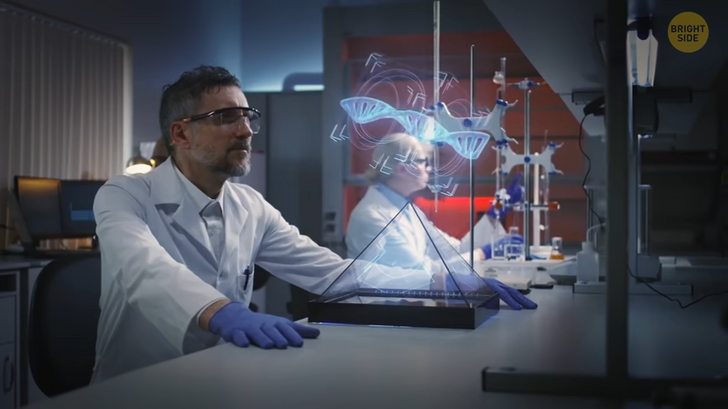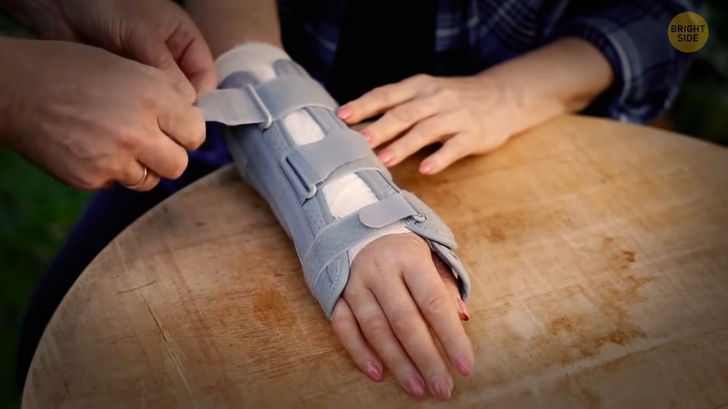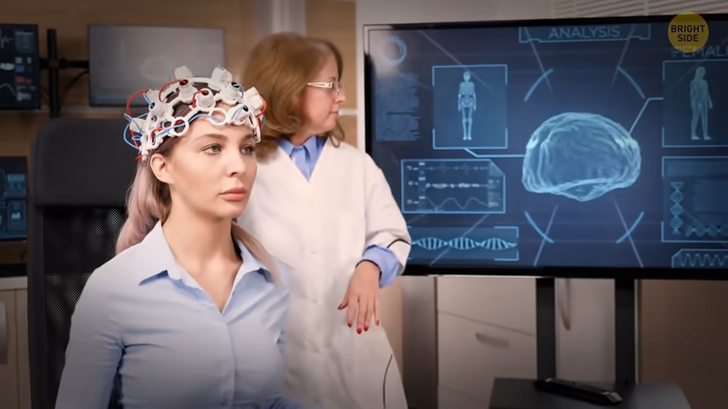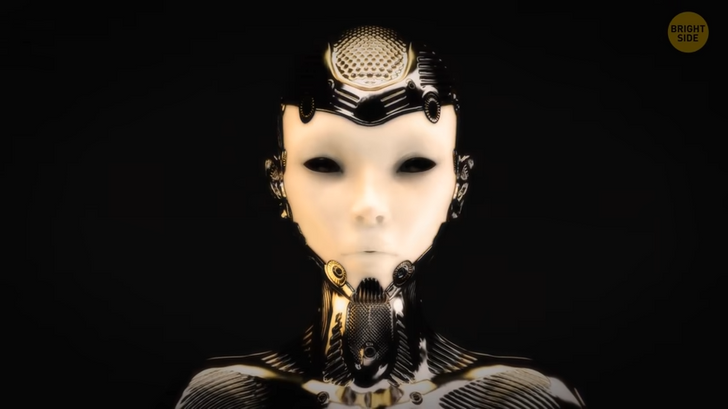I Tracked My Daughter’s Phone and Discovered a Disgusting Secret


Hey there, Bright Siders. My name is Tom, and today I welcome you to have a peak into the future. Let’s imagine it’s your Birthday, and the entire family is here to celebrate. It’s a nice group of 562 people.
Perfect — it takes a village to put down 1,000 candles. You cooked that 40 layer cake and built that house yourself. With the new average life expectancy, you have enough time to master any hobby in the world.

This is not a sci-fi plot — there is someone in the world today who will live to be 1,000 years old. It could be your neighbor’s granddaughter, your best friend, or even you.
Thanks to better nutrition, more available clean water, and huge progress in medical science, people are already living much longer today than they used to 150 years ago. Now scientists are trying to figure out a way to slow down, halt or even reverse the aging process.
One of the leading experts on aging, Aubrey de Grey, is positive humans can medically defeat it. Aubrey had a successful career in IT. Then, he fell in love with biology and decided to solve the aging problem. So he went back to Cambridge to earn a PhD in Biology and later invested most of his inheritance in his project.
Almost all living beings age, but they do at different speeds and in different ways. Quahog clams can live for over 500 years. A female mayfly has a full lifecycle of less than five minutes.

Scientists have already managed to extend lifespans of yeasts, worms, fruit flies and small mammals thanks to genetic manipulation and stem cell therapy. All living beings are made of the same chemical building blocks. So similar strategies could work for humans.
Dr de Grey explains aging is the result of metabolism going wrong. He discovered only seven types of possible causes of it. If scientists can learn to settle that molecular and cellular damage before it gets too dangerous, they could prevent people from aging.
Dr de Grey believes they’ll be able to solve these problems in mice and stop their aging in 10 years with stem cell therapy. When it’s done, scientists would need another 15 years to find similar solutions for humans.
Stem cells provide new cells for the body as it grows, can replace lost or damaged cells and tissues that your body wouldn’t manage to cope with naturally. It’s possible because they can divide over and over again. Plus, stem cells have all the genetic information and can turn into any other type of cell. Adult stem cells are already used to treat some conditions.

There are technologies that in theory can take and relocate strands of DNA and add or remove DNA. It would be as complicated as taking 850 volumes of Shakespeare and editing just one certain letter. Changing DNA in the future can help prevent aging and extend life. With every round of therapy, the patient would get healthier with younger organs, nerves, and bones.
Dr de Grey explains today’s humans will unlikely invent a therapy to make you live to 1,000. But scientists can give humans an extra 30 years. It would mean some extra time for new research. New therapies could be invented then and give humans another 50 years. This way, step by step, humans would stay ahead of aging and someone living today can eventually celebrate their 1,000th Birthday. The oldest officially confirmed age record for humans so far is 122 years.
Hmm. I don’t know. I sure hope my retirement plan would last that long. Don’t want to be working at a fast food joint when I’m 375 years old. Well anyway...
Evolution has never stopped. Some scientists say it’s been going up to 100 times faster over the past 10,000 years than ever before.

The average body temperature has been going down with every decade for the past 200 years. In 1868, 98.6 degrees Fahrenheit was considered “normal”. Now it’s around 97.9 degrees. This happened thanks to progress in curing some infectious diseases that speeded up metabolism and made internal temperature higher. It’s also because people spend most of the time indoors with a nice cool climate now and don’t need to make an effort to keep a neutral body temperature.
Over the last 150 years, the average height of an adult has grown by 4 inches. Humans also grew 14% heavier on average. Some heavier than others. This became possible thanks to better nutrition, food distribution, health care and hygiene. Scientists are sure this trend will continue in the future. Taller and heavier people will need more calories, so this could be a problem.
The genes are constantly changing, too. Several thousand years ago, adults couldn’t drink milk because one enzyme turned off. When raising cattle became popular, more and more people got the genes that control lactose tolerance.
In India, a large group of vegetarians developed a mutation in one gene. It let them process certain fatty acids from non-meat sources and convert them into important nutrients for a healthy brain. People on a meat-based diet rarely have that gene.

The bones are becoming weaker and less dense. This process started around 12,000 years ago along with farming. Diets and physical activity changed back then, and it made the human skeleton more fragile. This trend will likely go on as people are moving less and less these days.
Some people who live in houseboats in South East Africa have developed larger spleens than their neighbors. This adaptation helps them stay underwater for a long time. They spend most of their lives fishing and collecting shellfish.
In 100 years from now, people will get regular body upgrades even if they don’t need it for medical reasons. Some companies already produce mechanical exoskeletons to make factory workers more productive. There are also exoskeletons for skiers to make them faster.
With the technology of the future, there will be more robotic limbs. They will mimic or replace certain organs and will let people live their dreams. You’ll be able to climb Mount Everest at 80 with bionic organs controlled from your smartphone. Uh huh.
You’ll get new senses. Technology will let you feel the seismic activity through sensors on your feet, hear color waves through an antenna in the skull, predict weather through gadgets in your ears and have other senses you can only dream of now. This could make humans closer to nature than ever. Or not.

Humans will outsource more of their cognitive abilities to gadgets. Most people already can’t read maps because gadgets tell them where to go.
There will be brain-machine interfaces, and you’ll be able to transfer your thoughts online and analyze them. You already do something similar to your steps and calories with apps that track them. New apps will let you track how much attention you pay to a certain problem or analyze an argument with your partner in detail. Hey, no need for people skills, huh?
It’s possible that scientists will find a way to increase the diameter of the neurons in the brain. That would give you an incredible reaction time, a real-life slow motion function when you need to.
With genetic engineering, more humans will look alike to fit the general idea of attractive. (I hope not.) There will be strong lines, straight noses, beautiful bright eyes and all facial features fitting the golden ratio and perfect left and right symmetry. The brains will continue to grow, so there will be larger foreheads. And maybe larger eyebrows to go with that.
As it’s highly likely humans will start living on other planets, we’d have to adapt to their harsh conditions. Lungs would have to be redesigned to gather more oxygen in new atmospheres. Tissues would have to change, too, to filter the dangerous elements.

The further away humans will move from the sun, the dimmer it would be and the larger the eyes and pupils would have to become. It would let them absorb more sunlight. They’d also develop new features like low-light vision and a sideways blink to help protect the eyes from cosmic rays.
In 1,000 years from now, computers will become more and more human. To somehow compete with them, humans will become more integrated with robots.
Tiny nanobots will swim around your body to boost all your natural abilities. Humans will be able to record sounds and have built-in phones in their ears along with super hearing. There will also be super eyesight and super health in general. (Well that sounds super.)
Merging human minds with computers will give everyone superbrains. You’ll be able to do the most complex equations instantly, search the web and pull up any fact in your mind. You won’t need to type any messages. You’ll communicate with others through electrical signals and direct thought transmission. Well that’s nice, but how will this improve my golf game?

Humans will be an interplanetary species. Mars is the most likely new place of residence. New humans born on Mars will be taller than anyone on Earth. The Earth’s gravity is three times stronger than that of Mars. Out there, the fluid between vertebrae would extend making the spines longer.
Humans will most likely become immortal. To make it possible, scientists will have to figure out how to download consciousness into a machine. They’re already trying to transfer consciousness between animals.
Well I can’t speak for you, but for me, that’s a bit of a nightmare... Hey they can keep their nanobots, I’ll just keep sitting here watching the clouds go by and enjoying the sunshine. Like they say “it’s not about the number of years in your life, but the life in your years.” I didn’t make that up.











